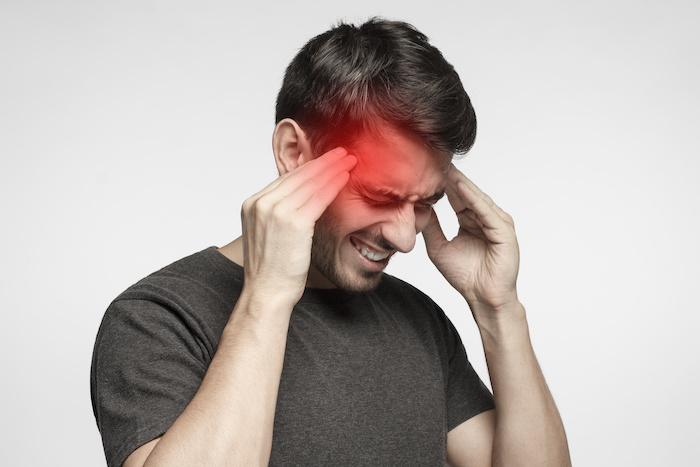
Introduction
People of all ages and backgrounds frequently experience headaches. They can range from mild discomfort to debilitating pain, impacting daily activities and overall quality of life. Understanding the root causes, identifying symptoms, and exploring effective remedies are crucial for managing and alleviating headaches. In this comprehensive guide, we delve into the complexities of headaches, offering insights into their various types, triggers, and treatment options.
Tapentadol 200mg is a larger dose of the medicine used to treat moderate to severe pain. Tapentadol 200mg, like the 100mg dosage, is an opioid analgesic. Its mode of action includes binding to the mu-opioid receptor and blocking norepinephrine reuptake, resulting in dual pain relief benefits.
Types of Headaches
1. Tension Headaches
Tension headaches are the most prevalent type, characterized by a dull, achy sensation around the head, often described as a tight band encircling the forehead. They are typically triggered by stress, poor posture, or muscle tension in the neck and shoulders.
2. Migraine Headaches
Migraines are intense, throbbing headaches often accompanied by nausea, vomiting, and sensitivity to light and sound. They can last for hours or even days, significantly impacting daily functioning. Migraines may be triggered by hormonal fluctuations, certain foods, or environmental factors.
3. Cluster Headaches
Cluster headaches are excruciatingly painful headaches that occur in clusters or cycles, typically striking one side of the head. They often manifest with symptoms such as red, watery eyes, nasal congestion, and restlessness. While the exact cause of cluster headaches remains unclear, they are believed to involve abnormalities in the brain’s hypothalamus.
Tapentadol 100mg is a medicine used to relieve moderate to severe pain. It is an opioid analgesic. The major method of action is to bind to the mu-opioid receptor and impede norepinephrine reuptake. This multimodal mechanism helps manage pain by influencing both the opioid and noradrenergic pathways.
Common Triggers
Understanding common triggers is essential for managing and preventing headaches. Some of the most prevalent triggers include:
- Stress: Emotional or physical stress can contribute to tension headaches and exacerbate migraine episodes.
- Poor Posture: Prolonged sitting or standing in awkward positions can strain the muscles of the neck and scalp, leading to tension headaches.
- Dietary Factors: Certain foods and beverages, such as caffeine, alcohol, aged cheeses, and artificial sweeteners, may trigger migraines in susceptible individuals.
- Environmental Factors: Exposure to bright lights, loud noises, strong odors, or changes in weather patterns can precipitate headaches.
- Hormonal Changes: Fluctuations in estrogen levels, commonly experienced during menstruation, pregnancy, or menopause, may trigger migraines in some women.
Buy tapentadol online is a centrally acting analgesic (pain reliever) that treats moderate to severe pain. It is classed as an opioid analgesic and comes in both immediate and extended-release forms. Tapentadol binds to mu-opioid receptors in the central nervous system and inhibits norepinephrine reuptake.
Symptoms to Watch For
Recognizing the symptoms of headaches is crucial for prompt intervention and management. While symptoms may vary depending on the type of headache, common indicators include:
- Head Pain: Persistent or throbbing pain in the head, often accompanied by pressure or tightness.
- Sensitivity: increased sensitivity to light, sound, or certain smells.
- Nausea and Vomiting: Feelings of queasiness or actual vomiting are particularly common with migraines.
- Aura: Visual disturbances, such as flashing lights or blind spots, may precede a migraine attack.
- Fatigue: feeling tired or exhausted, even after adequate rest.
- Irritability: mood changes or irritability, often associated with tension headaches.
Effective Remedies
1. Lifestyle Modifications
Making lifestyle changes can significantly reduce the frequency and severity of headaches. Incorporating regular exercise, practicing stress-reduction techniques such as yoga or meditation, maintaining proper hydration, and ensuring adequate sleep can all contribute to headache prevention.
2. Dietary Adjustments
Monitoring and modifying dietary habits can help identify and eliminate trigger foods that contribute to headaches. Keeping a food diary to track potential culprits and adopting a well-balanced diet rich in fruits, vegetables, whole grains, and lean proteins can support overall headache management.
3. Medications
For acute relief, over-the-counter pain relievers such as ibuprofen or acetaminophen may provide temporary relief from mild to moderate headaches. For more severe or frequent headaches, prescription medications such as triptans or preventive medications may be recommended by a healthcare provider.
4. Alternative Therapies
Complementary and alternative therapies, including acupuncture, chiropractic adjustments, biofeedback, and herbal supplements, may offer relief for some individuals suffering from chronic headaches. It’s essential to consult with a qualified healthcare professional before embarking on any new treatment regimen.
Conclusion
Headaches are a widespread health concern, affecting millions of people worldwide. By understanding the various types of headaches, identifying common triggers, recognizing symptoms, and exploring effective remedies, individuals can take proactive steps to manage and alleviate their symptoms. Remember, seeking guidance from a healthcare professional is paramount for accurate diagnosis and personalized treatment recommendations.






